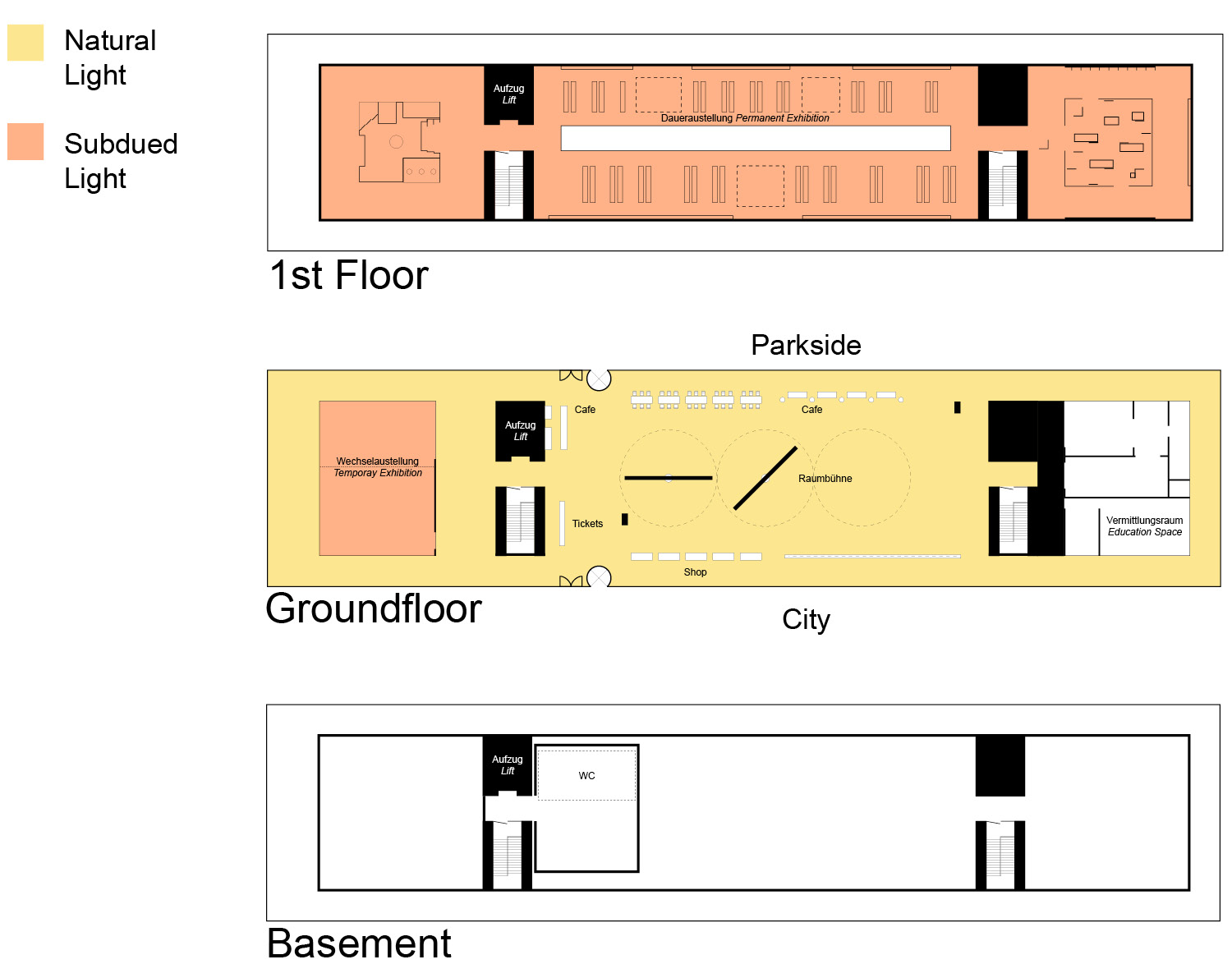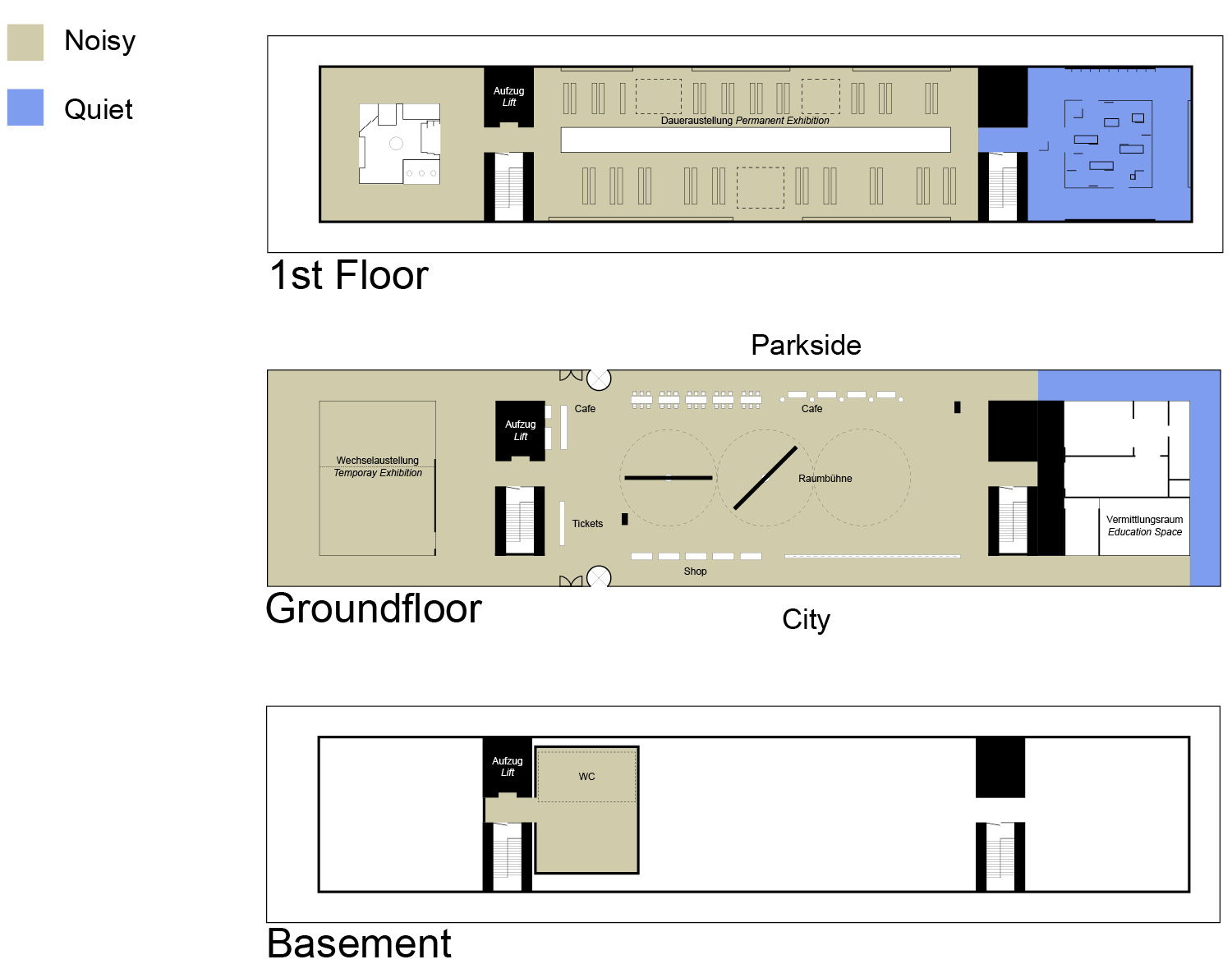Wheelchairs can be borrowed free of charge. Please contact the visitors’ service.
There is a designated parking space for people with disabilities (size: 350 cm x 500 cm).
The entrance to the car park is on Friedrichstraße. From here you can reach the back of the Bauhaus Museum.
The distance from the car park to the main entrance is 350 m, the distance to the entrance at the back of the building is 190 m.
The path has a maximum longitudinal gradient of 3 % over a distance of 50 metres.
The “Bauhausmuseum” tram stop is 40 metres from the main entrance.
The building is accessible without steps via both entrances (front and back).
All rooms and facilities are accessible without steps or via a lift.
The lift car measures 145 cm x 157 cm. The lift door is 100 cm wide.
All surveyed doors/passages that can be used by the guests are at least 90 cm wide.
The ticket counter is 104 cm high at its lowest point. There is another equivalent communication option while seated.
There is a public toilet for people with disabilities that can be accessed from at least one side (at least 80 cm). The grab rails on the toilet can be folded up.
Permanent exhibition
Most of the exhibits in the exhibition rooms on the upper floor are visible from a seated position.
Most of the information on the exhibits, stations and objects can be read while seated.
Guided tours are offered for people with impaired mobility and wheelchair users. Pre-booking is necessary.
Mobile or fixed seating is available for people with impaired mobility, which can be used during the guided tour.
The objects are presented in glass showcases with a low plinth.
Education
The entire route of the guided tours is accessible without steps for wheelchair users.
The museum’s workshop room is accessible without steps.
Guided tours are offered for people with impaired mobility and wheelchair users. Advance booking is necessary.
Mobile or fixed seating is available for people with impaired mobility, which can be used during the tour.



